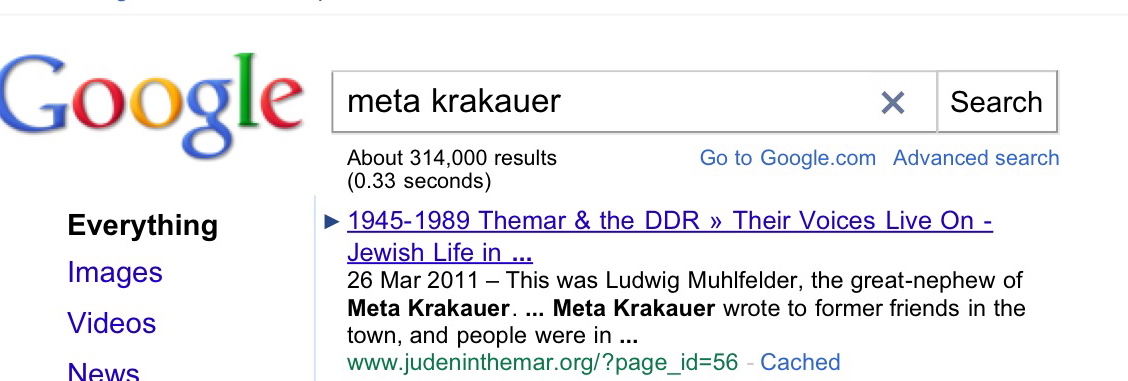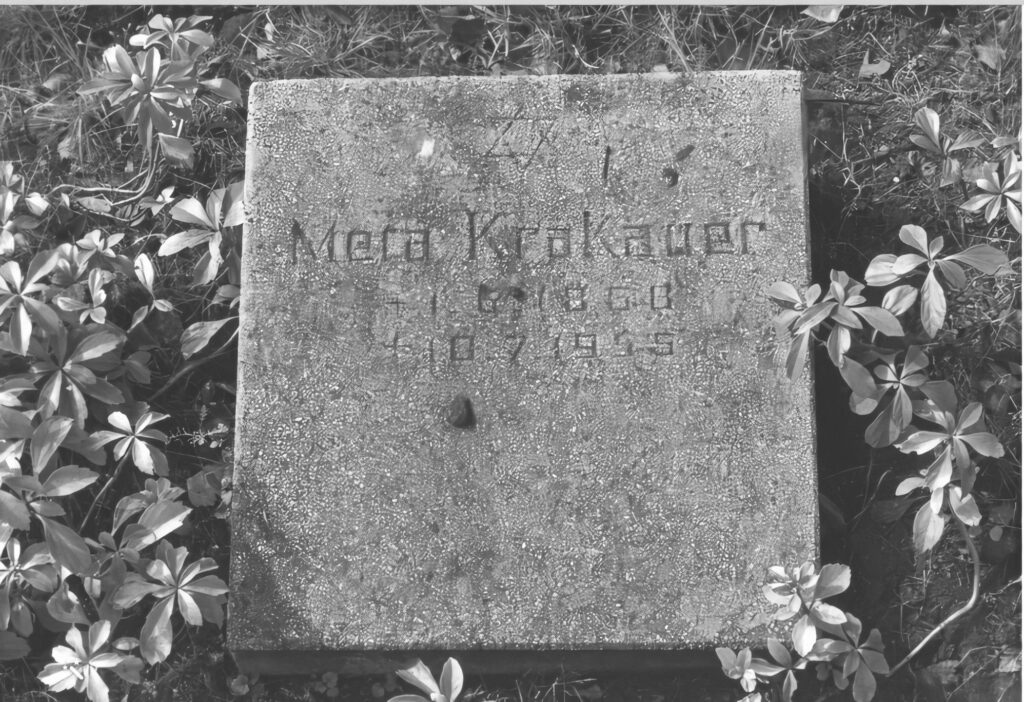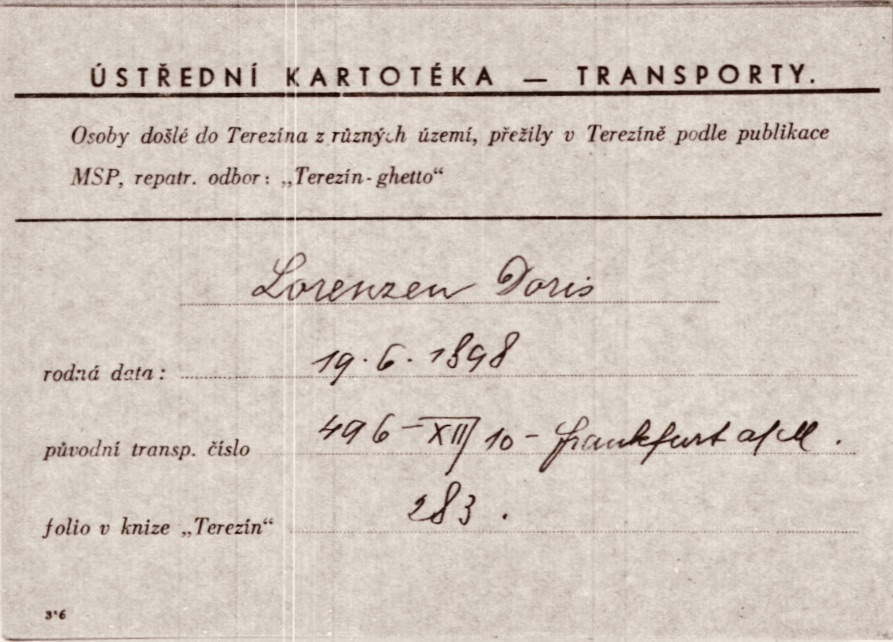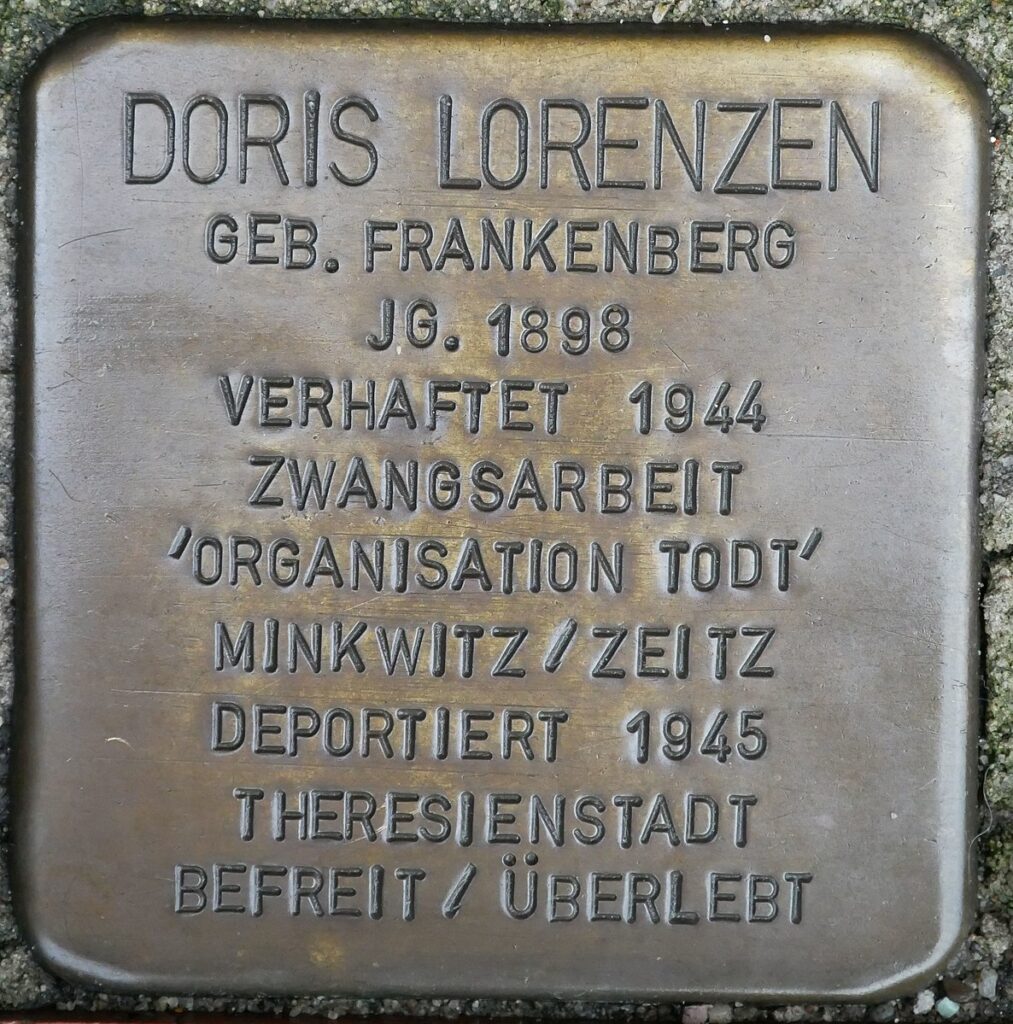15 December 2023: This post has been updated with documents made available online in the Arolsen Archives.
Initial post, 26 June 2011: Ever vigilant to discover any new traces about Themarens, a recent google search for “Meta Krakauer” brought lots of news!


Six months ago [2010], Anne Prior of Dinslaken published a book about the Jewish community of Dinslaken, „Wo die Juden geblieben sind, ist […] nicht bekannt.” It received excellent reviews and quite a bit of publicity, and the google entry pictured above highlighted Meta Krakauer. The book itself provides much welcome information.
We already knew quite a bit about Meta Krakauer, née Frankenberg. Born 1866 in Marisfeld, she was a member of the very large Frankenberg family who moved from Marisfeld to Themar in the late 1860s/early 1870s. Meta lived most of her life, therefore, in Themar, leaving it only in September 1942, age 74, when she was deported to the Theresienstadt Ghetto. In December 2023, we learned from the research group Sikaron in Felsberg that Meta had been forced to sign a “Heimeinkaufsvertrag” or “Property Purchase Contract,” by which she allegedly purchased room and board and care for the rest of her life. We knew that Meta survived the Holocaust in the Theresienstadt ghetto and that she was the only Jew deported from Themar to survive. We knew that Meta had been in Dinslaken after the war because, on 9 September 1946, she wrote a two-page letter to Gertrud Stubenrauch in Themar from Dinslaken. Why she was there, we knew not.


*****
Now we know why Meta was in Dinslaken: her niece, Doris Lorenzen (née Frankenberg), who was also deported to Theresienstadt Ghetto and was also in the Ghetto upon liberation, took Meta home with her to Dinslaken. There was no reason for Meta to return to Themar and thus she remained in Dinslaken. She died ten years later on 10 July 1955, and was buried in the Dinslaken Jewish Cemetery, “the only survivor,” Prior tells us, “of a National Socialist ghetto to be buried there.”

This information brings closure to Meta’s story, but Prior’s research also provides detail about Doris Lorenzen (née Frankenberg), about whom we knew little. We knew that Doris had been born in Themar in 1898 because she submitted the “Addition of Sara” form to the city Registrar in December 1938. The form told us that she had married in 1926 in Krefeld and lived in Dinslaken-Lohberg. But after that, silence. Her name did not appear in any of the databases, such as Ancestry.com, the Deutsches Archiv, Gedenkbuch, or Yad Vashem, so we did not know what had happened to her. The possibilities were many: perhaps she had emigrated to Israel, South Africa or someplace not yet included in the Ancestry.com databases, or she had died before the Holocaust, or perhaps she had survived. We had questions: Whose daughter was she? Whose sibling? Who was her husband? Did she have any children? What happened to her?

Now we have answers: Doris Lorenzen (née Frankenberg) survived the Holocaust. Her husband, Karl Lorenzen, was not Jewish, and Doris’s status within a so-called ‘mixed marriage’ protected her from deportation into 1944. Until July 1942, the Lorenzen family lived in Dinslaken-Lohberg but the three were then “forcibly committed to the ‘Jews’ house’ in Weseler Straße. Doris lost her protected status on 17 September 1944, when she was arrested in Dinslaken with the three other Jewish women in Dinslaken married to Christian men. With them, she was taken from Düsseldorf to Minkwitz near Zeitz to do forced labour for the “Organisation Todt.” On 18 February 1945, she was deported from Frankfurt am Main to Theresienstadt on the train registered as transport no. XII/10. Doris Lorenzen was given prisoner number 1210496.

In the ghetto, Doris found her 77-year old aunt, Meta Krakauer, the youngest sister of Doris’s father, Nathan, b. 1853. Born in Marisfeld in 1866, Meta had been in Theresienstadt since the deportation of the Jews of Thüringen to the ghetto on 19/20 September 1942. She had been assigned to prison labour, sewing soldiers’ uniforms — a circumstance which, according to her post-war letter to Gertrud Stubenrauch, saved her life. After the liberation of Theresienstadt in May 1945, Doris Lorenzen returned to Dinslaken, bringing Meta, who had lost all her relatives except for her niece Doris, with her. In October 1945, Doris Lorenzen opened her “retail shop selling textiles, linen and cleaning products” at Hünxer Str. 363 and continued working until close to her death.
*****

We now know where Doris fits in the Frankberg family map. She was the youngest of five daughters of Nathan and Bertha Frankenberg, née Rosenthal. (Her father, Nathan, was the eldest son of Löb and Jette Frankenberg, née Hermann. Nathan was 13 years older than his youngest sister, Meta, and died in 1920.) Doris’s mother, Bertha, died in May 1942 in Essen where she had presumably gone to live with her daughter, Martha, and her family; it appears that Bertha died of natural causes. With the exception of one sister, Hilde Sander, née Frankenberg, who died of natural causes in 1938, Doris lost her other three sisters — Martha Katz née Frankenberg, Lucie Heinemann née Frankenberg, and Ida Katz née Frankenberg — to the Holocaust.
 Doris converted to Catholicism and was buried in the Catholic cemetery upon her death in early January 1970. Her husband, Karl, predeceased her, her son Gerd was married.
Doris converted to Catholicism and was buried in the Catholic cemetery upon her death in early January 1970. Her husband, Karl, predeceased her, her son Gerd was married.
In April 2014, a Stolperstein was laid for Doris Lorenzen in Dinslaken. At the request of the Lorenzen family, the Stolperstein for Doris Lorenzen was laid at Bahnstr. 12. There are already Stolpersteine for the Katz family here. Martha Katz, née Frankenberg, in whose house her sister Doris Lorenzen went in and out, was murdered in Auschwitz. The sisters were close friends.
